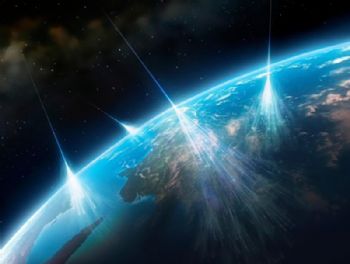
Scientists have developed a technology that can harness muons to detect and safely manage radioactive waste. The £7 million project — led by scientists at the National Nuclear Laboratory (NNL), the University of Glasgow (
www.gla.ac.uk) and spin-off company Lynkeos Technology Ltd — could have major implications for nuclear decommissioning, the storing of historic nuclear waste and the testing of new waste management methods.
The technology has created a technique for detecting when muons — particles produced when cosmic rays collide with
the earth’s atmosphere — pass through uranium.
Craig Shearer, project leader at NNL (
www.nnl.co.uk), said: “About 10,000 muons are hitting every square metre of the earth’s surface every minute.
Dozens hit you every second and when they do, they pass straight through you — with almost no detectable deviation.
“When they hit uranium, however, they scatter. When we first looked at this in 2009, we thought we had a 50/50 chance of turning it into a product that could be commercialised for the nuclear industry, but the results have surpassed our expectations at every stage.”
NNL is currently deploying the technology at Sellafield, and the detector has now been commercialised by Lynkeos Technology, ready to be sold on the global market.
Ralf Kaiser, CEO of Lynkeos, said: “The Muon Imaging System (MIS) can be used for a variety of purposes, whether that’s inspecting old/spent material used in nuclear production to see if it’s safe to store, for imaging the products of thermal treatment processes or inspecting historic waste without needing to chip away its concrete casing.
"This form of detection gives the nuclear industry an inexpensive method of testing waste materials. It should help to significantly reduce costs.”
The project, which received initial seed funding from NNL, has also been supported with a £1.6 million research contract from Innovate UK, £4.8 million of funding from Sellafield Ltd and further grants and fellowships from EPSRC, STFC and the Royal Society of Edinburgh.